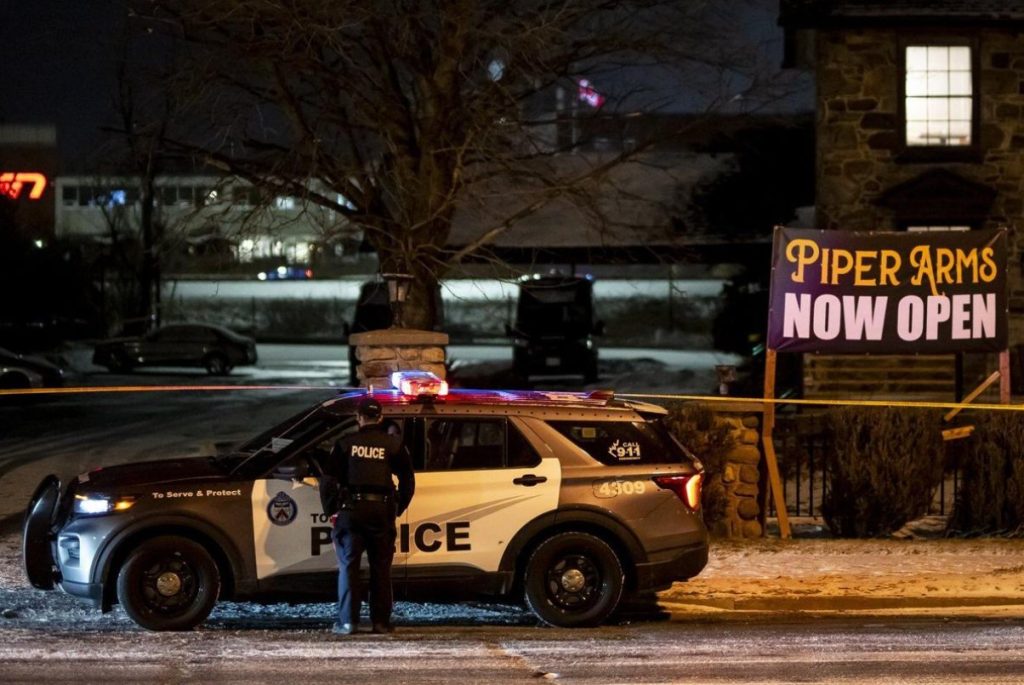Delta and schools: Assessing how the variant could impact in-person learning this fall

Posted August 4, 2021 12:09 pm.
Last Updated August 4, 2021 1:26 pm.
“I really can’t envision or see any closure of any schools in Ontario – or colleges or universities – we must maintain them open going forward.”
That’s the message from Ontario’s chief medical officer of health in light of the province releasing its longly-coveted, back-to-school plan that will see elementary and secondary school students back in classrooms.
Over the past year, as students stayed home to learn virtually, a contentious debate has raged over how much schools contribute to the spread of COVID-19 and whether and when they should close.
For some parents and teachers, keeping schools open when the virus circulated seemed like an avoidable risk. For many others, though, school closures posed a greater danger, such as learning loss, growing educational inequalities, and worsening mental health.
There is an emphasis on masks and distancing. Cohorts will be in place. But what the 29-page document fails to elaborate on is how school boards will move forward in the case of COVID-19 outbreaks resulting in possible closures.
“To be prepared for a potential closure, school boards should have plans in place so they can move to remote learning quickly to ensure continuity of learning of students,” the province’s back-to-school guidelines document says.
RELATED: More Canadians say worst of COVID-19 yet to come as the Delta variant spreads: poll
The province’s plan involves at-home self-screening for staff and students with a more detailed tool provided by Ontario officials or public health units. Education Minister Stephen Lecce, who spoke earlier Wednesday, says the province followed thorough health and safety guidelines ahead of releasing the plan.
Lecce says, aligning almost exclusively to the document, that proper ventilation will go a long way in keeping students safe and inside classrooms.
On Wednesday, Ontario’s Science Advisory Table – which recommended that students return to in-person learning – reported an effective reproduction number R(t) of 1.22, indicating exponential growth (the effective reproduction number corresponds to the average number of additional infections caused by one infection.)




The Delta variant is also on the rise, with the VOC making up 87.2 per cent of all cases in Ontario.
Recent data suggests that people infected with the Delta variant may carry a thousand times as much virus, making them contagious and for longer compared to the original strain.
One factor is vaccinations, a topic on which the back-to-school plan failed to expand on in greater detail. Health and safety protocols may be rolled back over time, dependent on vaccination rates, but the government isn’t making shots mandatory for staff or students.
Despite immense progress with province-wide vaccine rates (over 81 per cent of adults aged 18-and-up have at least one dose with 71 per cent fully vaccinated), those 12 and older continue to lag in first and second doses.
RELATED:
-
Families and experts want more guidance for unvaccinated kids as Ontario reopens
-
Ontario science advisory group recommends extracurriculars resume; schools stay open.
-
Ontario top doc calls for vaccine push among young people ahead of school return.
-
COVID-19 pandemic continues to greatly impact child and youth mental health: SickKids study
Updated data shows 71.6 per cent of those between the ages of 18 and 29 have at least one shot, while only 67.2 per cent of teenagers aged 12-17 are vaccinated with one dose.
Conversely, 56.2 per cent of those aged between 18-29 are fully vaccinated, with only 49.2 per cent of youth aged 12-17 wholly immunized (in perhaps a positive note, recent research has shown that the virus is much less likely to cause severe illness in children as young as 12.) There is no comprehensive data on how the Delta variant affects young children, but there is no evidence that the variant of concern is targeting them specifically.
Education Minister Lecce was questioned on the government’s decision not to mandate vaccines for children 12 and up. He says Ontario officials are respecting the choice of individuals while advocating that everyone get the shot.
“Our aim is to encourage vaccination at a voluntary level,” Lecce said Wednesday. “It is promising to see the general population numbers move north of 80 per cent.”
With two shots offering the best protection against the Delta variant – including reducing the odds of being infected with the virus and guarding against hospitalization and death – Dr. Kieran Moore continues to plea to families and younger people to go out and get vaccinated.
It led to one opposition member openly criticizing the Ford government’s logic to getting students back in class five days a week.
“Putting 40 kids in a class again is a risk,” NDP Leader Andrea Horwath and education critic Marit Stiles said in a statement.
“Taking no new actions to get more kids vaccinated is a risk. Hoping kids recover, academically and emotionally, when they’re in crowded classrooms with no extra caring adults to turn to is a big risk. Let’s not take risks like that.”
Last week, because of concerns about the Delta variant, the Centre for Disease Control and Prevention (CDC) revised its guidelines, recommending that everyone wear masks in schools this fall regardless of vaccination status.
The Elementary Teachers’ Federation of Ontario (ETFO) said teachers believe in-person learning is the best instruction model, but the union doesn’t believe the plan accomplishes that safely.
President Sam Hammond called on the government to lower class sizes, mandate masking for all students, including those in kindergarten, maintain existing precautions in gym class, and keep isolation rules for people with symptoms.
The Ontario Public School Boards’ Association applauded the plan but said the government must ensure that boards are fully funded for extra ventilation, personal protective equipment, and cleaning costs.

The plan emphasizes outdoor activities, such as allowing kids to play during recess with friends from other classes – with distancing encouraged but not required. It also allows shared materials again, such as computers, gym equipment, and toys in kindergarten.
Canada’s top doctor warned last week that the country is at the start of the fourth wave of COVID-19 that could lead to a sharp resurgence in cases if public health restrictions are lifted before vaccination rates pick up.
“The trajectory will depend on an ongoing increase in fully vaccinated coverage and the timing, pace and extent of reopening,” Dr. Theresa Tam said Friday as she revealed new COVID-19 modelling.
“While some resurgence is expected as measures are eased, this updated model shows that if we maintain current levels of community-wide contacts, we would expect to see a modest increase in cases.”








